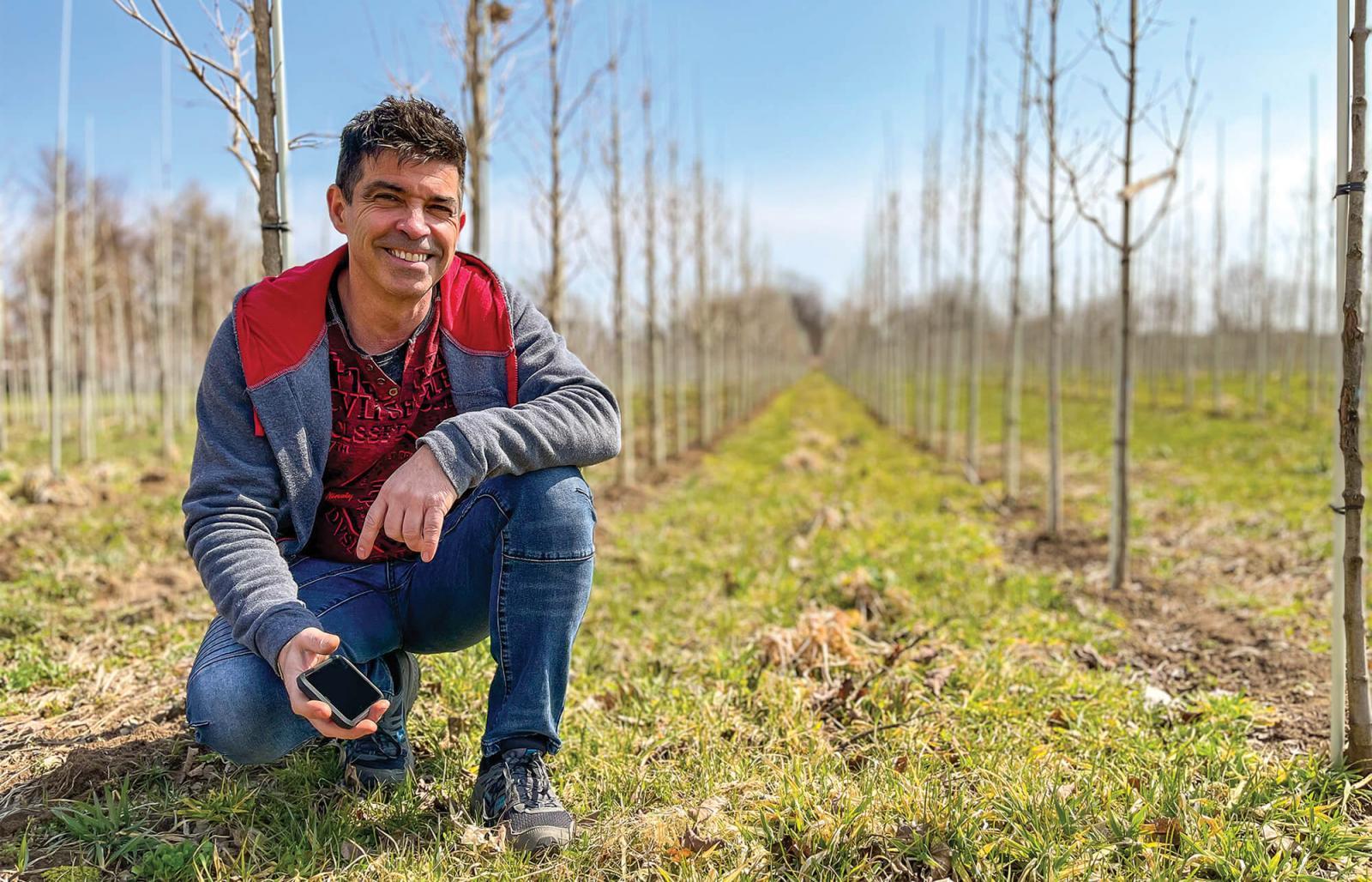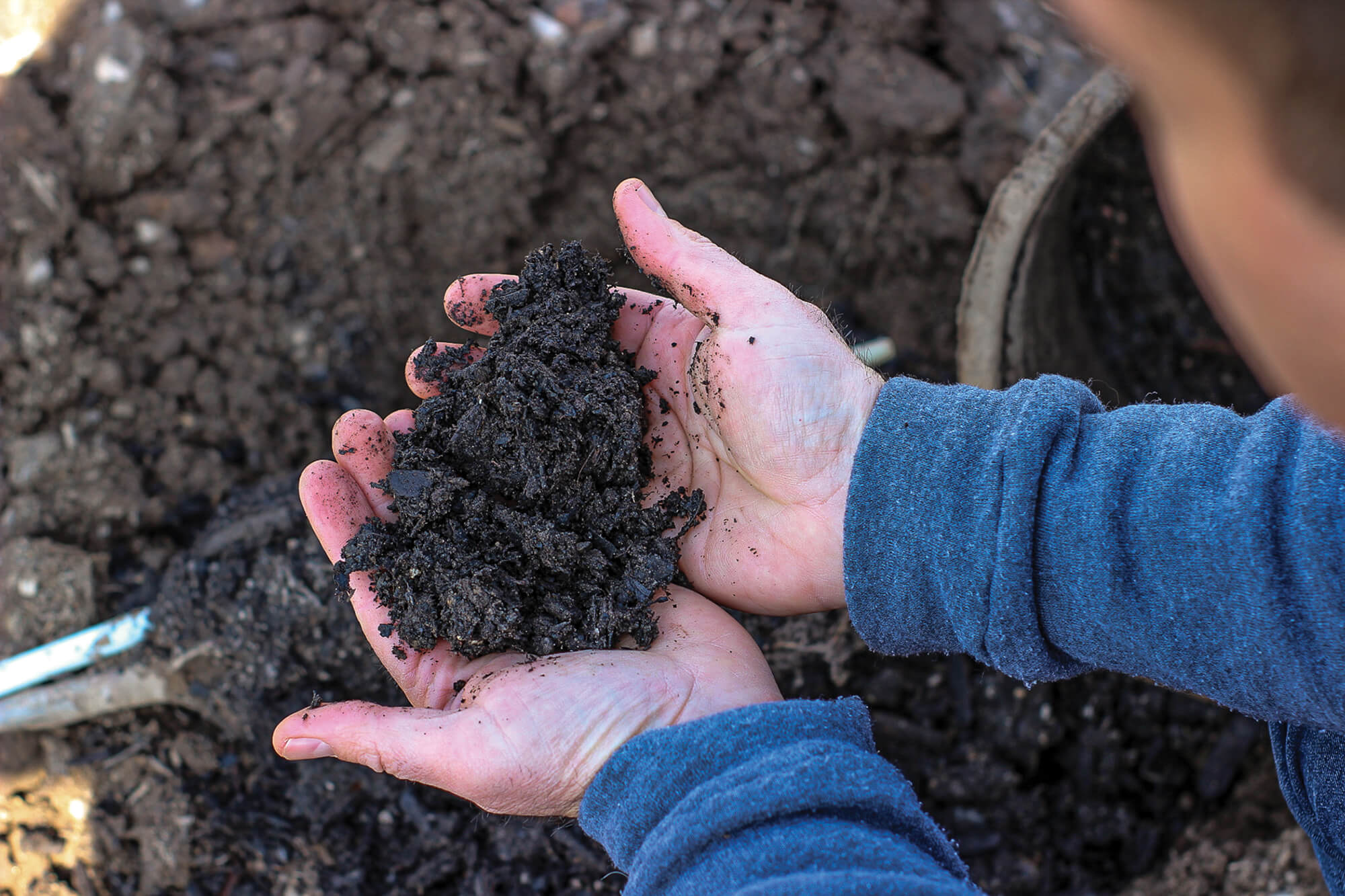May 4, 2021

Gilles Lapointe
Soil health and sustainability
NVK Nurseries researchers examine the impacts of cover crops
BY GILLES LAPOINTE
Over the last few years, the word sustainability seems to be popping up more and more. For some, this new focus brings opportunity: it’s just a matter of adapting. For others though, change is hard.
Our society demands the creation of goods as cheap and quickly as possible. Take the home appliance market, as an example. It has become the norm to have to replace appliances every 10 years, whether it’s due to electronic failures or, dare I say, cheap manufacturing to cut costs and maximize profits.
Quality is key
In horticulture, this high profit, low quality concept should be frowned upon, since a low quality produced tree means it may not survive in the landscape or it may cause damage in the future when it fails. Yes, a tree with an unhealthy root system will die sooner than it should and may well cause damage or personal injury. If you work in the nursery industry, you have probably heard about this during one of professor Glen Lumis’s presentations on soil health.Research and development is also a term used in many fields of work like biotechnology, pharmaceuticals, and more. Now nurseries are using it too. No choice, really, as 2020 showed everyone the value of ingenuity and adaptation. Nurseries have always tried new products and new techniques, but often the results were not well documented and evaluation was not followed through. And really, when spring rush hits, do you have time to document each new thing you do to improve your nursery?
In agriculture especially, it has been known for some time that soil health is very important. Now, we need to bring that emphasis on soil health to nursery production. The unfortunate truth is current maintenance and production practices are causing significant damage. We must do more to protect our soil ecosystems.
In agriculture and horticulture we have, over the years, weakened the health of our soils through the use of chemical products and machinery. We could say that our soils are suffering a general impoverishment. At NVK Nurseries in Dundas, Ont., we are diving into science in order to modify, amend, and improve our production techniques. We are looking at advancements used in agriculture and from the scientific literature, to adapt our production practices. We also rely on our knowledge acquired in-house over the last 100 years to better our soils and plant health. The results have been incredible.

How can we better support our soil?
It all starts at the soil level. No soil, no production. I am not talking about aquaculture. We are not growing trees and shrubs in aquaponics systems... yet!A few years ago, NVK began a research project into the use of cover crops to see what they could do for its fields.
We started with a simple mix of rye and clover in the spaces we drive between the trees in field production. The results were very positive as we could walk and drive more easily, without sinking into the ground.
Vineland Research and Innovation Centre did some research on one of our plots and found respiration was better when soils were covered with a cover crop when compared to bare ground.
Our research also showed that carbon dioxide was being released from microbial decomposition and plant roots and soil fauna. This means microbes are also living in the soil. We moved this research to the next level and planted multiple species of cover crops on several fields. The different mixed cover crops were seeded on what used to be called spray rows (now called driving rows) and on tree rows (the space where double rows of trees grow).
Cover crops in action
The results were fabulous. The cover crops grew three feet tall, weeds were naturally kept in check, worms started to appear in the topsoil, beneficial insects were more present, and the overall health of the trees seemed to be better than on sections of the farm without cover crops.Another interesting fact was that soil temperatures were 10 C lower than those from the bare ground nearby. So, imagine if you are a root trying to grow in 35 C in bare ground, you may think of going dormant for a while in the heat, but your friend near you within the cover crops will continue to grow and enlarge its caliper since its soil temperature is only 25 C!
We also discovered the soil under the cover crops was looser, less compacted, and water was able to infiltrate better than on bare ground. Since the cover crop was shedding dead leaves and renewing roots, this dying material became food for the worms and microbes. The blooms and aerial parts of the plants also provided alternative sources of food and protection for bees and beneficial insects. The bird cacophony has been incredible to listen to!
Of course, all of this can bring uninvited guests like voles, which can cause significant damage to tree trunks. However, while studying the impact of the tall dense multi-species crops, we saw not only voles but snakes, toads and birds of prey. So it seems nature is trying to take back its place and help us produce healthy trees.
While working in fields filled with mixed cover crops, I had a feeling of serenity. It was amazing to see the healthy tree leaves and butterflies, to hear the birds singing and to breathe the fresh air coming out of the cover crops. I did not get those feelings while standing in field trees growing on bare grounds; mostly, I felt the heat of the summer and heard the chirp of crickets.
Not just for nursery growers
The take home message here is not solely intended for nursery growers, but for landscape professionals and home gardeners too. In my days of creating landscapes, I used to teach clients about nature. For example, when I would stand on a property at the beginning of a project, with mostly turf and maybe a tree, I would talk to the clients about the impact their landscape can make. Why not create a lively party?Yes, it can indeed become a party with insects, worms, fungus, birds, butterflies and more! Fungus feed on mulch, pollinators feed on flowers, birds feed on insects and children play and laugh. In creating a landscape I find it is always best to cover the ground with as much live material as possible. It is like using a cover crop.
When clients ask to “see spaces between the plants,” I think the answer should almost always be that a space like that invites weeds. Usually that does the trick. I truly believe it is best to fill those spaces as much as possible, to avoid weeds, to keep moisture in the ground and to create a root network in the soil for worms and microbes to use. It also serves to sequester as much carbon as possible, providing a positive impact on the environment. All of those things help us move toward a more sustainable future. Which brings us back to square one.
In order to push forward for more sustainability, we also need to talk about feeding our soils and plants with organic matter, nutrients and microbes. Compost comes to mind. At NVK Nurseries, we are currently working on various compost recipes and their impacts on soil health and subsequent root growth (field trees and container production). Along with that, why not produce some compost tea to help prevent various diseases and improve our soil microbe population?
In our next article on nursery research (coming up in the next issue of Landscape Trades), I will delve into this topic. Until then, feel free to reach out to me so we can work together in learning, sharing and maybe even set up some research trials together.
Gilles Lapointe is a production advisor, in-house scientist, at NVK Nurseries in Dundas, Ont. Gilles holds a PHD from the University of Guelph in molecular biology and genetics. He can be reached at gilles@nvknurseries.com.